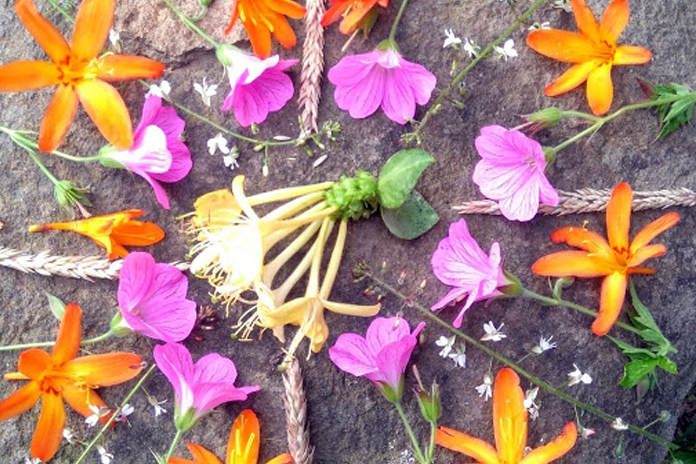Pagan Lammas
The Pagan holiday of Lammas was observed this year on August 1. Also known as Lughnasadh, this is a celebration of the first harvests of fruits, vegetables, and particularly grain. Throughout history, Pagan worshipers from all over Europe have taken time out to offer up prayers and sacrifices to the Celtic god named Lugh or Lugus, which roughly translates to “bright and shining one”. It is the Pagan’s hope that these rituals will lead to a bountiful yield of crops for the current season and into the next year.
Lammas also marks the coming of autumn and the ending of the hot summer months. As the legend goes, Lugh began this day of celebration in memory of his deceased mother, the goddess Tailtiu. It was a day of joyful game playing and festivities that began in the British Isles and Ireland many hundreds of years ago. Many Pagan worshippers still celebrate the holiday of Lammas, although it is often overlooked due to the fact that fruits, vegetables, and grains are so readily available throughout the year these days.
Customs and Rituals
In ancient times, Pagan worshippers would bring to church a loaf of freshly baked bread whose ingredients came from the newly harvested crop. The beginning of the harvest season was referred to as Lammastide. The loaf of bread would be blessed. And by performing certain specific rituals, the bread was believed to take on some rather magical qualities.
Once the bread was blessed in the church setting, it would be taken back to the barn, split into four equal pieces, and placed in its four corners. By doing so, the newly harvested grain inside the barn was believed to be protected by Lugh and his mother. Eventually, a fresh crop of newly sown wheat would also be presented to landlords of tenant farmers as an extension of this Pagan ritual.
Colors and Themes Associated with Lammas
Traditionally, the Celtics would celebrate the Lammas holiday from sunset to sunset of August 1 to August 2. The belief behind the tradition is that Lammas also marks the beginning of the end of Lugh’s yearly stronghold on the crops. Since Lugh is the Pagan “Sun King” of sorts and since the coming of August means that the daylight hours are growing shorter and shorter, the Pagans would reap the grain, allowing it to die so that the people may live. This resulting “bread of life” is not unlike the sacrament of Communion in the Catholic and other religious faiths.
Colors most commonly associated with the holiday of Lammas are earthy, autumn hues of browns, oranges, yellows, and golds. These colors are meant to reflect those associated with the baked bread and harvested grain. By honoring Lugh’s contribution to the growing of the yearly crops, the Pagans were showing gratitude for the sense of renewal that comes along with the death of the newly harvested wheat, grains, fruits, and vegetables. So, even though Lammas signifies the end of summer, it is more of a celebratory holiday of renewal rather than mourning.
Activities and Events
With Lammas being so closely associate with food, a great community feast was always a center attraction. Many times, bread was shaped into the figure of a woman as an homage to the goddess of grain, much like today’s gingerbread men. Freshly baked pies filled with newly reaped fruits and berries would also be included along with a variety of spiced vegetable dishes made from each family’s newly harvested crops. This time of year is the perfect time to have a psychic reading to discover how far you have come & reveal the possible paths that may open up ahead of you in the next year.
The feast would typically begin with the Lord’s Prayer, with a special emphasis being placed on the phrase, “Give us this day our daily bread”. Chants would often be recited in honor of the harvesting season, and certain types of craft-making activities from the yield would also ensue. Children would be taught how to make Corn Dollies from the dried out husks of corn. This was the Pagan ritual of showing more gratitude and honor to the grain goddess. The Corn Dollies would be dressed in fun bonnets and aprons before being carefully placed in the home until the following spring. Then the Corn Dollies would be again replanted into the earth to bring good luck to the next year’s crops.
Lammas is a season of saying goodbye to the summer months. And it is very common for Pagan worshipers to sit around the campfire, telling stories of the coming winter. Regrets of things not accomplished during the summer were often shared while holding some sort of visual symbol in their hands before tossing the object into the fire as a way of saying farewell. Lammas is actually a very beautiful time of reflection and an anticipation of hope and optimism for the coming year.
Many people ask me for a psychic near me, I have pulled together my very best, all available online. Check out my new psychic or clairvoyant available now panel

